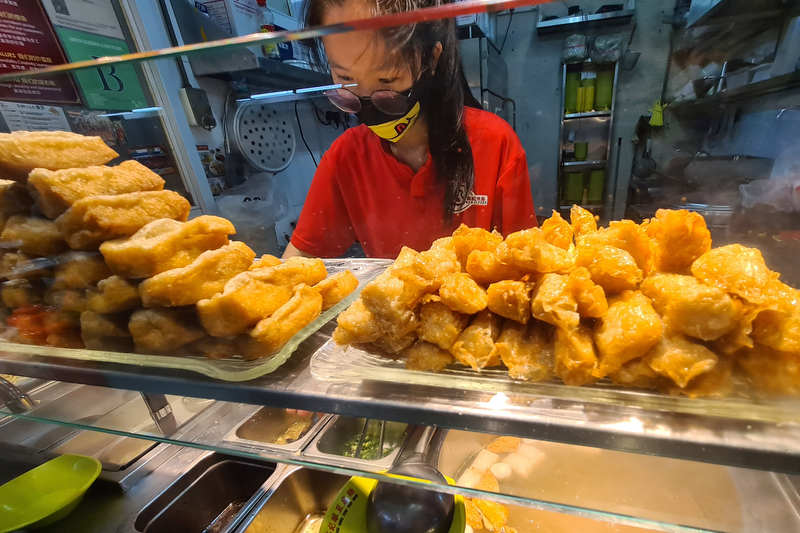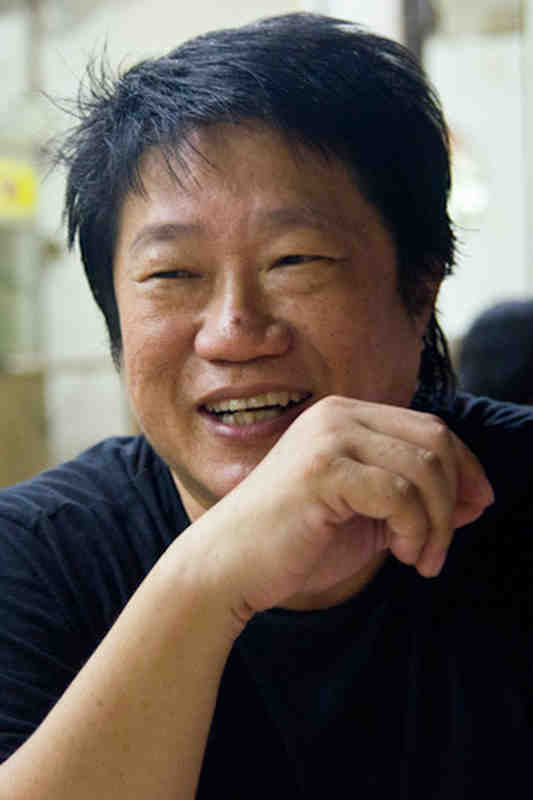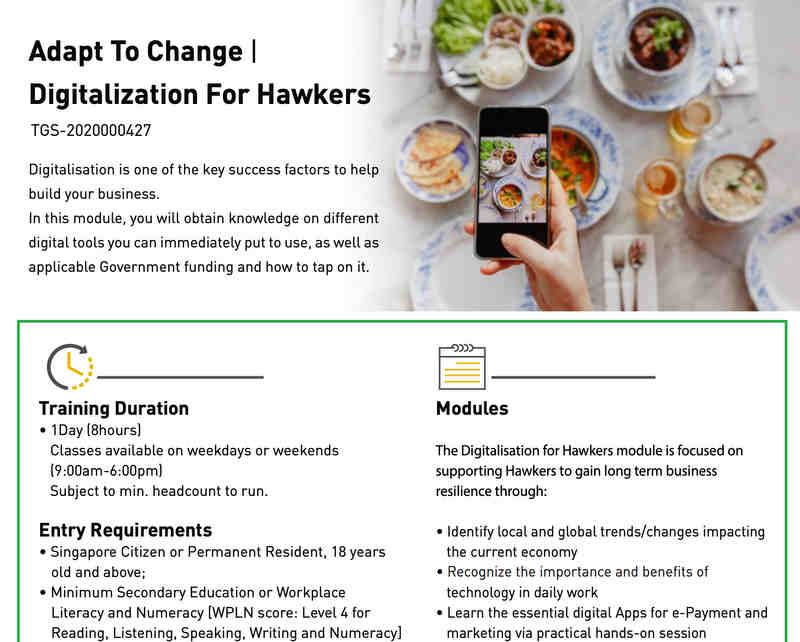Full-time work continues to elude fresh graduates of polytechnics and institutes of technical education in Singapore’s pandemic disrupted job market.
According to a 2020 study released on Jan. 12 by the Polytechnic Graduate Employment Survey, of the 87.4% of graduates who found jobs within six months of finishing their studies, only 52% worked full time.
A pivot towards a traditional industry awarded as an intangible cultural heritage by UNESCO could be that just-in-time opportunity.
A work-study post-diploma in “hawkerpreneurship” is launching in March at Temasek Polytechnic to encourage the young, digital-savvy generation to enter the hawker food trade.
In December 2020, UNESCO recognized Singapore’s hawker culture as evolving from street food to being “markers of Singapore as a multicultural city-state, comprising Chinese, Malay, Indian and other cultures.”
According to UNESCO, “Hawkers take inspiration from the confluence of these cultures, adapting dishes to local tastes and contexts. Today, hawker centers across Singapore continue serving the needs of diverse communities in residential, recreational, and work districts.”
“To safeguard our hawker culture, we must continue to attract new talents to enter the hawker trade,” said Amy Khor, Singapore’s Senior Minister of State for Sustainability and the Environment, at an event titled “Celebrating Hawker Culture, Infusing Tradition with Innovation.”

Opportunity for fresh graduates
“This year’s polytechnic graduates are entering the job market in an unprecedented time,” said Clarence Ti, Principal of Ngee Ann Polytechnic, speaking on behalf of the polytechnic Graduate Employment Survey committee, which polled over 7,000 polytechnic graduates.
The employment survey was conducted by Singapore’s Nanyang Polytechnic, Ngee Ann Polytechnic, Republic Polytechnic, Singapore Polytechnic, and Temasek Polytechnic.
“The polytechnics will continue to provide career guidance and support to graduates to help them find a job in the area of their training or pivot to the new job roles that are being created,” said Ti.
The 12-month program on hawker entrepreneurship at Temasek Polytechnic will take its first batch of students in March.
It will be open to all recent graduates from polytechnics and the institutes of technical education, offering “a head-start in the hawker profession through classroom and on-the-job training which will prepare them for a career as a hawkerpreneur and also in the larger food and beverage industry.”
Learners will also undergo training to enhance business management skill sets and culinary skills needed to operate on a commercial scale.
An apprenticeship phase puts learners under the mentorship of an experienced hawker to acquire the experience of running a hawker stall.

Back at campus, learners will acquire the basics of preparing a business plan. In the final phase, trainees will run their business at their individual stalls and will have an opportunity to apply for the government’s Incubation Stall Program which includes subsidized rent.
“I’ve always advocated hawker food business education. No one or school has the true expertise to distill the depth of this rich and very undocumented organic street food craft built over the decades,” said respected Singapore food guru KF Seetoh, publisher of the Makansutra Food Guide.
“The course may not capture what we truly have, but it’s a good start,” Seetoh said.
“It will offer participants a longer, more structured curriculum to equip them with the relevant skills to run a hawker business or enter the F&B trade,” said Senior Minister Khor.
Upskill existing hawkers, reskill mid-career professionals
At the SG Hawker Seminar, Senior Minister Khor spoke about digitalizing hawker culture. Learning outcomes include diversifying revenue streams, improving business processes, and adapting hawkers to food-delivery models that “is likely here to stay even post-COVID-19.”
The Asian Culinary Institute of Singapore — a continuing education and training initiative of Nanyang Polytechnic — offers the course Adapt to Change – Digitalization for Hawkers.
Senior Minister Khor said, “We recognize that adopting technological solutions is not easy, especially for some of our older hawkers.”
After the one-day course, learners will identify local and global economic trends, learn how to use e-payment apps, and create digital marketing campaigns.

The Singapore government says it will also continue to support existing hawkers to stay relevant through the use of technology.
Singapore’s National Environment Agency (NEA), in cooperation with SkillsFuture Singapore, rolled out the Hawkers’ Development Programme (HDP) “to equip aspiring and existing hawkers with the relevant skills and competencies to run their hawker businesses. It also encourages them to take advantage of social media platforms to market their business.”
“I feel there should be a Hawker Academy for all interested, not just ITE or poly students. Many mid-career adults are keen to switch to being heritage hawkers,” added Seetoh.
Elayne Ang did just that. She left the banking industry after 15 years and opened a hawker stall selling carrot cake and hokkien mee fried noodles two years ago.
“I had a decent salary. But there was office politics, it was always an ever-running sales number, and we were always in a rat race. I was thinking to myself, ‘Do I want to continue this in my 40s and 50s?'” she said in an interview with The Straits Times.
Ang and her partner received a Promising New Hawker Award at the first-ever Singapore Hawkers Awards.
Singapore’s pride
Singapore’s hawker culture was inscribed on UNESCO’s Representative List of Intangible Cultural Heritage of Humanity during a meeting of the fifteenth session of the Intergovernmental Committee for the Safeguarding of the Intangible Cultural Heritage.
With hawker culture now on the UNESCO list, Singapore is now committed to protecting and promoting it. A report must be submitted every six years, showing efforts to safeguard and transmit hawker culture to future generations.
Makansutra‘s KF Seetoh, who advocates for all things Singapore hawker, shared some insights of a 2018 focus group meeting ahead of the UNESCO nomination process.
Seetoh praised Singapore’s National Environment Agency (NEA) for championing the 6,000 or so public hawkers but noted that there are over 20,000 more “private” hawkers all over the country that form the biggest chunk of Singapore’s hawker culture. They should not be overlooked.
“After all, these humble and ordinary folks made our living spaces so much more lively and meaningfully delicious,” said Seetoh.




